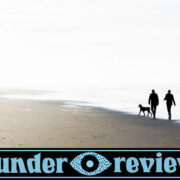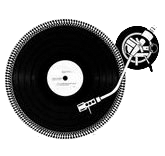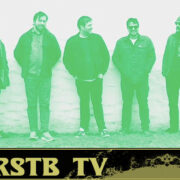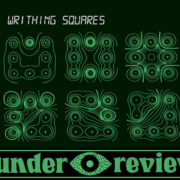The Coathangers’ Julia Kugel on Howlin’ Wolf – The Howlin’ Wolf Album 

This year has been stuffed with great Hidden Gems and the latest continues the trend. After the release of one of their best album’s to date, The Coathangers’ Julia Kugel has passed along some wisdom from her own record shelves. If you’re unfamiliar with the band (which, frankly seems unlikely) their latest is a great place to start, boiling down their punk, post-punk, and garage impulses to a sound that’s serrated and sawing yet damnably hooky. The band is blessed with three strong songwriters, each bringing their own particular burn to the band and its great to get a look at what’s behind that burn, even just a bit. Julia chooses a conflicted blues classic for her entry. Check out her take on Howlin’ Wolf’s psychedelic period below.
Kugel begins by telling us how the album crept into her collection in the first place. “I was strolling around one of my favorite Atlanta markets one day,” she muses, “and stumbled upon a booth with old records. On the bottom rack, staring at me seductively was The Howlin’ Wolf Album. It wore a blank beige cover and in black block letters it read “This is Howlin’ Wolf’s new album. He doesn’t like it. He didn’t like his electric guitar at first either.” It was like the record was speaking to me in third person about the creator’s feelings towards his creation. I was intrigued right away by the honesty and humility of the front cover. On the back was a square with collaged photographs presumably from the recording sessions, one of which is Howlin’ Wolf giving a big lazy yawn.”

She expands on how the record went from bargain bin to hidden gem, “I bought it and went home to see what all the fuss was about, halfway expecting it to be terrible. Alas, this record is amazing! From the very first beats of the drum intro, I was taken on a journey through new interpretation of old blues gems as seen through a psychedelic haze of abstract guitars and roving bass lines and the impressive and mesmerizing drumming of Morris Jennings. Actually, all the musicians that play on this album are incredible! This record came out in 1968, and you can feel how this group of young experimental players is pulling Howlin’ Wolf’s established majesty into a new era. It all holds up and floats together in a wondrous weave of styles and textures. It’s perfect!”
As usual I ask if the record has influenced Kugel’s own work and she notes, “What has influenced me about this album isn’t necessarily the musical style, but the bravery and freedom that run rampant throughout the album. Even if he was reluctant, as the cover suggests, Howlin’ Wolf made a tremendous record, forging ahead into new territories while still respecting and paying homage to his roots. It’s honest, no frills, magical, simple and complex at once – everything I would ever want to make. This record reminds me that being challenged is productive and instrumental in great achievement. It’s about the push and pull, as well as the synergy of artists and styles that makes for great music. I am grateful to have found it and grateful for the opportunity to share it!“
The reception to The Howlin’ Wolf Alubm has always been divided. Blues purists are a hard bunch, but as Julia notes, this is a solid album to add to one’s collection. The bulk of the backup players were from the psych band Rotary Connection, long since hip-hop breaks makers in their right. The record has recently been reissued by Get On Down Records, so it remains widely available even if you don’t luck on a used copy. Nab one below and while you’re at it, check The Coathangers’ latest on Suicide Squeeze.
Support the artist. Buy it HERE.









